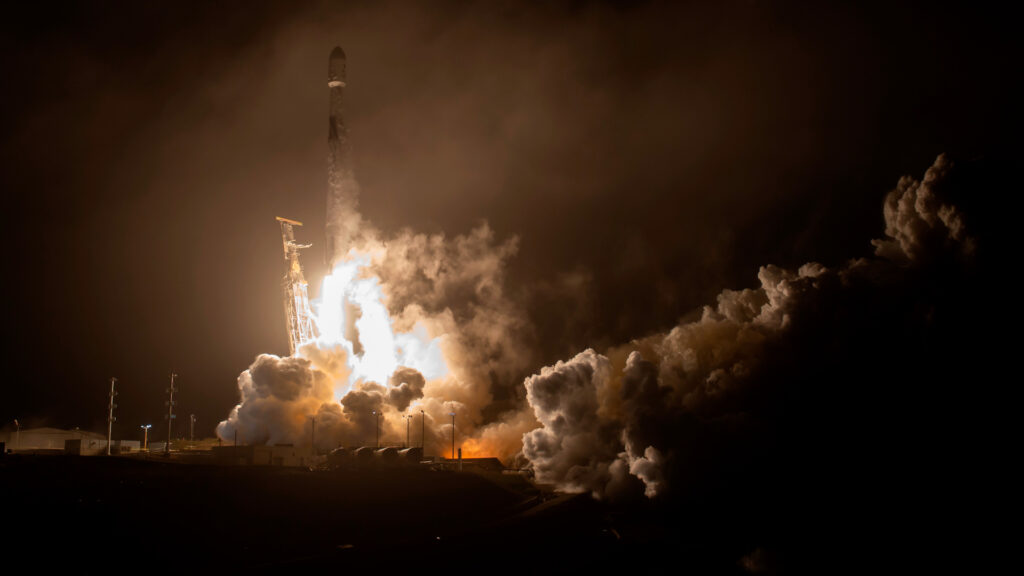Science
Related: About this forumA Rare Risk of Asteroid Fastballs Turns Scientists Into Sluggers
Researchers smashed an asteroid with a spacecraft. From the aftermath, they are learning how to better protect Earth.

Top: Riding atop a SpaceX Falcon 9 rocket, NASA’s Double Asteroid Redirection Test, or DART, spacecraft sets off to collide with an asteroid in the world’s first full-scale planetary defense test mission in November 2021. Visual: NASA/Bill Ingalls
BY THEO NICITOPOULOS
05.15.2024
On a fall evening in 2022, scientists at the Johns Hopkins University Applied Physics Laboratory were busy with the final stages of a planetary defense mission. As Andy Rivkin, one of the team leaders, was getting ready to appear in NASA’s live broadcast of the experiment, a colleague posted a photo of a pair of asteroids: the half-mile-wide Didymos and, orbiting around it, a smaller one called Dimorphos, taken about 7 million miles from Earth.
“We were able to see Didymos and this little dot in the right spot where we expected Dimorphos to be,” Rivkin recalled.
After the interview, Rivkin joined a crowd of scientists and guests to watch the mission’s finale on several big screens: As part of an asteroid deflection mission called DART, a spacecraft was closing in on Dimorphos and photographing its rocky surface in increasing detail.
Then, at 7:14 p.m., a roughly 1,300-pound spacecraft slammed head-on into the asteroid.
Within a few minutes, members of the mission team in Kenya and South Africa posted images from their telescopes, showing a bright plume of debris.
In the days that followed, researchers continued to observe the dust cloud and discovered it had morphed into a variety of shapes, including clumps, spirals, and two comet-like tails. They also calculated that the impact slowed Dimorphos’ orbit by about a tenth of an inch per second, proof-of-concept that a spacecraft — also called a kinetic impactor — could target and deflect an asteroid far from Earth.
More:
https://undark.org/2024/05/15/asteroid-impact-planetary-defense/
Hermit-The-Prog
(36,562 posts)The depth of goofiness: I put my headphones on to play the video in the OP.
3Hotdogs
(13,345 posts)started the Space Force.
I was a cadet-sergeant Video Ranger in Captain Video. I should'a been offered a command position in the Space Force. I could'a helped 'em get the thing started.